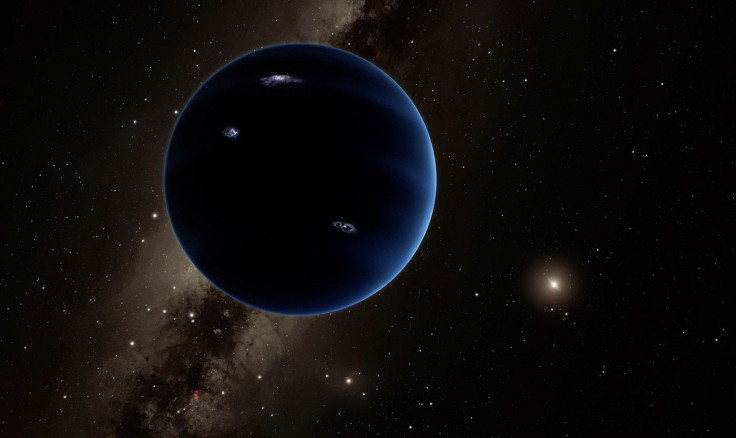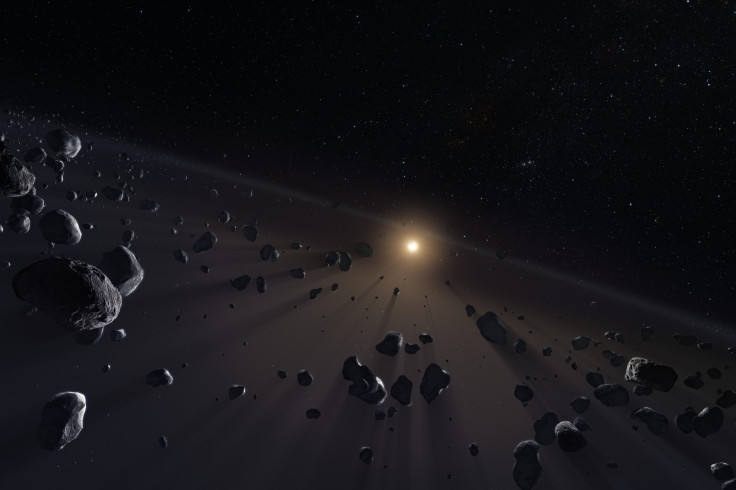Hypothetical ‘Planet Nine’ Not Causing Outer Solar System Oddities, Alternative Theory Argues

Since Pluto was demoted from being called a planet, some proponents of a theory that posits the existence of a large planet in the outer reaches of our solar system — beyond the orbit of Pluto — have referred to it as “Planet Nine”, though the hypothetical body is also sometimes called “Planet X.” Proof for the existence of such a body comes, in large part, from the behavior exhibited by some smaller bodies in the Kuiper Belt — which lies beyond the orbit of Neptune and contains millions of icy, rocky objects, including Pluto — and the necessary presence of a source of gravity that directs that behavior.
However, a new theory — put forth by researchers from the University of Cambridge in the United Kingdom and the American University of Beirut in Lebanon — offers a source of gravity that isn’t the hypothetical “Planet Nine”, or even a planet at all.
The unexpected behavior that “Planet Nine” tries to explain is the orbit of some trans-Neptunian objects, which are a large number of bodies of various sizes that are remnants from the formation of the solar system about 4.5 billion years ago. These TNOs, like everything else in the solar system, orbit the sun, and these orbits are almost circular. But there are about 30 TNOs whose orbits are highly elliptical and all of them have, on average, the same spatial orientation relative to the sun.
Given the cluster of outliers to the usual TNO behavior, astronomers concluded it could not be explained by the current eight-planet model of the solar system. Even though gravitational force from the four outer giant planets affects TNOs, that alone couldn’t account for the elliptical orbits of some TNOs. There needed to be something else in the outer fringes, something with mass about 10 times that of Earth, which was affecting these objects. And that something was hypothesized to be “Planet Nine.”
The new theory says that instead, “a disc made up of small icy bodies with a combined mass as much as ten times that of Earth” is what causes the gravitational force to “account for the unusual orbital architecture exhibited by some objects at the outer reaches of the solar system.”
“The Planet Nine hypothesis is a fascinating one, but if the hypothesized ninth planet exists, it has so far avoided detection. We wanted to see whether there could be another, less dramatic and perhaps more natural, cause for the unusual orbits we see in some TNOs. We thought, rather than allowing for a ninth planet, and then worry about its formation and unusual orbit, why not simply account for the gravity of small objects constituting a disc beyond the orbit of Neptune and see what it does for us?” Antranik Sefilian, a PhD student in Cambridge’s Department of Applied Mathematics and Theoretical Physics and a coauthor of a new paper detailing the theory, said in a statement Sunday.
The proposal to use the gravitational force from the mass of the disc of several small objects, instead of a hypothetical massive planet, is not new in itself, the statement added, but the new theory is the first to explain the observed properties of the unusual TNO orbits in conjunction with the mass and gravity of the eight planets we know.
“If you remove ‘Planet Nine’ from the model and instead allow for lots of small objects scattered across a wide area, collective attractions between those objects could just as easily account for the eccentric orbits we see in some TNOs,” Sefilian said.

However, much like is the case with “Planet Nine,” there is no direct observed evidence for the presence of a debris disk massive enough to satisfy this theory. Large debris discs have been observed around several other stars, and several of those discs are known to be quite massive. The problem with observing the disc in the solar system is that we are inside the system ourselves, and therefore, seeing all the debris at one time is extremely difficult, if not impossible, with our current technology.
So, while Sefilian and his former professor Jihad Touma put forth this theory, and based it on the hypothesis that the solar system’s debris disc is about 10 times more massive than Earth, he did not entirely rule out “Planet Nine” either.
“It’s also possible that both things could be true – there could be a massive disc and a ninth planet. With the discovery of each new TNO, we gather more evidence that might help explain their behavior,” Sefilian said.
The paper, titled “Shepherding in a Self-Gravitating Disk of Trans-Neptunian Objects,” will be published in the Astronomical Journal, and a copy is available on the pre-print server arXiv.org.
© Copyright IBTimes 2024. All rights reserved.





















